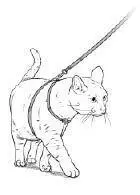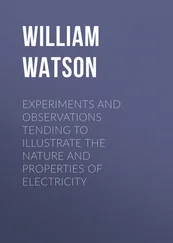Mark Changizi - Harnessed - How Language and Music Mimicked Nature and Transformed Ape to Man
Здесь есть возможность читать онлайн «Mark Changizi - Harnessed - How Language and Music Mimicked Nature and Transformed Ape to Man» весь текст электронной книги совершенно бесплатно (целиком полную версию без сокращений). В некоторых случаях можно слушать аудио, скачать через торрент в формате fb2 и присутствует краткое содержание. Год выпуска: 2011, Издательство: Perseus Books Group, Жанр: Старинная литература, на английском языке. Описание произведения, (предисловие) а так же отзывы посетителей доступны на портале библиотеки ЛибКат.
- Название:Harnessed: How Language and Music Mimicked Nature and Transformed Ape to Man
- Автор:
- Издательство:Perseus Books Group
- Жанр:
- Год:2011
- ISBN:нет данных
- Рейтинг книги:5 / 5. Голосов: 1
-
Избранное:Добавить в избранное
- Отзывы:
-
Ваша оценка:
- 100
- 1
- 2
- 3
- 4
- 5
Harnessed: How Language and Music Mimicked Nature and Transformed Ape to Man: краткое содержание, описание и аннотация
Предлагаем к чтению аннотацию, описание, краткое содержание или предисловие (зависит от того, что написал сам автор книги «Harnessed: How Language and Music Mimicked Nature and Transformed Ape to Man»). Если вы не нашли необходимую информацию о книге — напишите в комментариях, мы постараемся отыскать её.
Harnessed: How Language and Music Mimicked Nature and Transformed Ape to Man — читать онлайн бесплатно полную книгу (весь текст) целиком
Ниже представлен текст книги, разбитый по страницам. Система сохранения места последней прочитанной страницы, позволяет с удобством читать онлайн бесплатно книгу «Harnessed: How Language and Music Mimicked Nature and Transformed Ape to Man», без необходимости каждый раз заново искать на чём Вы остановились. Поставьте закладку, и сможете в любой момент перейти на страницу, на которой закончили чтение.
Интервал:
Закладка:
he constituet pitch hills in melodies tend to be roughly eight beats long.
4. Newton’s irst Law of Music (Encore)
hanging Dopper pitches have little or no tendency to continue changing, consistent with Newton’s First Law of Motion (inertia).
hen melodic ontour varies, there is little or no tendency to continue changing.
5. Newton’s irst Law of Music (Encore)
ore subtly, oppler shifts possess “momentum” only when falling by a small amount.
ore subtly, elodic contours possess “momentum” only when falling by a small amount.
6. Newton’s irst Law of Music (Encore)
mall Dopplerpitch changes are more likely downward, and large pitch changes more likely upward.
mall melodiccontour changes are more likely downward, and large changes more likely upward.
7. Newton’s irst Law of Music (Encore)
xtended segmnts of falling Doppler pitch are more common than extended segments of rising Doppler pitch (due to passing movers).
ownward meloic runs are more common than upward melodic runs.
8. Newton’s irst Law of Music (Encore)
ore proximal and thus louder, movers are more likely to undergo large downward Doppler pitch runs.
ouder portios of music are more likely to feature large pitch runs downward (compared to upward).
9. Slow Loudess, Fast Pitch
eople can tun quickly, and can thus change Doppler pitch quickly (i.e., half a tessitura in about two steps). But people cannot typically change loudness quickly, because that requires actually moving many steps across space.
elodic contor changes quickly, but loudness changes at much slower time scales.
0. Medium Enounters (Encore)
ncounters wih a person have an average distance, spending more total time at near-average distances than at disproportionately near or far distances (in contrast to the fairly uniform distribution of Doppler pitches).
ost pieces hve a typical loudness level (e.g., mezzo forte ), spending most of their time at that loudness level, and progressively less time at loudness levels deviating more from this average (in contrast to the fairly uniform distribution of melodic pitches).
1. Medium Enounters (Encore)
n any given ncounter, a person is more commonly more distant than average than more proximal (because there’s more “far” real estate than “near”).
he distributon of times spent at each loudness level is not only peaked, but asymmetrically disfavors the louder loudness levels.
2. Medium Enounters (Encore)
earer-than-aerage portions of a mover’s encounter tend to be shorter in duration than farther-than-average portions.
ouder-than-aerage segments of music tend to be more transient than softer-than-average segments.

Conclusion
So What Are We?
You can’t catch a cat with a carrot. Unless you fashion the carrot into the spear tip of a harpoon and have good aim, you’ll have better luck luring the cat with tuna fish. Even though cats didn’t evolve eating 500-pound tuna, the meaty odor and taste taps into what cat noses and tongues like. If you keep up a daily dose of fish—and a wee bit of water—you’re likely to have caught yourself a cat. Add a litter box next to your toilet and this cat will quickly become no more likely than you to stain the carpet. With these two simple steps, and only $39 in supplies, you’ll have quickly transformed a wild animal with hundreds of millions of years of evolutionary design into a toilet-trained, self-cleaning vermin remover.
Unlike dogs, who have changed their brains and bodies for hundreds of thousands of years to suit man—that is, they’ve become domesticated—cats are notoriously not domesticated. Cats may be our occasional friends and usefully serve as clean critter catchers, but they think they are wild cats, and they do what wild cats tend to do. They fit into our lives not because they have evolved for us, but because we’ve shaped our houses—and it doesn’t take much shaping—so that cats behaving like cats naturally leads to a function fulfilled for us.
Cats are harnessed , not domesticated—their innate talents redirected, with little or no training, in ways evolution didn’t intend. And the fundamental trick behind our harnessing cats is so simple we hardly appreciate it; in fact, I’ve already mentioned it. Tuna, not carrots, and kitty litter, not a bidet. Although tuna is not what cat ancestors ate, tuna is sufficiently meat-ish in odor and taste that it fits right into a cat’s finicky diet disposition. And although kitty litter is a strange and unnatural concoction, it mimics the loose soil in which cats prefer to bury their feces. Tuna and kitty litter are simulacra of nature, and thus successfully harness cats, turning them into good pets.
Just as we find cats with lifestyles they are not meant to have, we humans are apes living an un-ape life. Far beyond being potty trained, we build the very toilets we sit on. In light of tuna fish and kitty litter, in this book we have examined whether simulacra of nature could be the key to our humanity. Rather than supposing that our wild bits have evolved and changed to help us become modern humans, and rather than supposing the opposite—that our feral brain is a general-purpose learning machine that is extensively wired during our lifetime to make us genteel—in this book we have examined a third possibility: that our brains, to this day, are just as they were before anyone spoke or folded napkins, and that culture evolved to harness our ape powers, cleverly turning them into a new kind of power. Apes became literate and musical not because language and music got themselves innately encoded into the brain, but because the brain got its signature stamped upon language and music. We’re cats, not dogs.
In particular, this book has been about culture’s general strategy for harnessing us. The trick is to structure modern human tasks as tasks at which our ape selves already excel. And one surefire way to do this is to make the task thoroughly “like nature.” This book set out to put flesh on the bones of this idea, and to convey preliminary evidence that this is the strategy culture used to make us fit into modernity: making modernity fit us.
(a) Speech sounds like solid-object physical events, (b) music sounds like people moving, and (c) Homo sapiens became modern humans by virtue of cultural evolution designing language and music to mimic nature—by virtue of nature-harnessing. That’s the book in a nutshell. We have been down and dirty discussing (a) and (b) over the last three chapters, and these, in conjunction with arguments in The Vision Revolution that writing looks like opaque objects strewn in 3-D space, are the principal arguments for (c), that nature-harnessing is the mechanism for how we got from ape to man. Speech and music are the most central and transformative—revolutionary—powers we possess, and that’s why it is reasonable to say that nature-harnessing is the mechanism that created humans.
And if nature-harnessing is what made us, and if other animals don’t get made in this way, then it is worth reflecting upon what we humans are . How can we think about ourselves? To help illustrate what we are, it helps to back up really far away. So let’s consider how aliens try to make sense of us . . .
When aliens come to Earth to investigate life here, they don’t simply beam up a specimen and start probing. (And they’re also, by the way, not disproportionately interested in the anus.) Only a novice prober would do a simple beam-and-probe, and would surely get a quick rap on the proboscis from the instructor. The problem with abducting an animal of interest, all by itself, is that you can’t understand an animal without an appreciation of the environment the animal inhabits.
Читать дальшеИнтервал:
Закладка:
Похожие книги на «Harnessed: How Language and Music Mimicked Nature and Transformed Ape to Man»
Представляем Вашему вниманию похожие книги на «Harnessed: How Language and Music Mimicked Nature and Transformed Ape to Man» списком для выбора. Мы отобрали схожую по названию и смыслу литературу в надежде предоставить читателям больше вариантов отыскать новые, интересные, ещё непрочитанные произведения.
Обсуждение, отзывы о книге «Harnessed: How Language and Music Mimicked Nature and Transformed Ape to Man» и просто собственные мнения читателей. Оставьте ваши комментарии, напишите, что Вы думаете о произведении, его смысле или главных героях. Укажите что конкретно понравилось, а что нет, и почему Вы так считаете.












